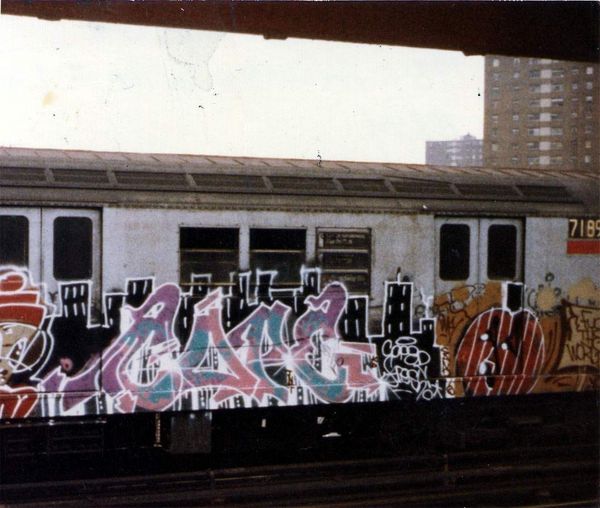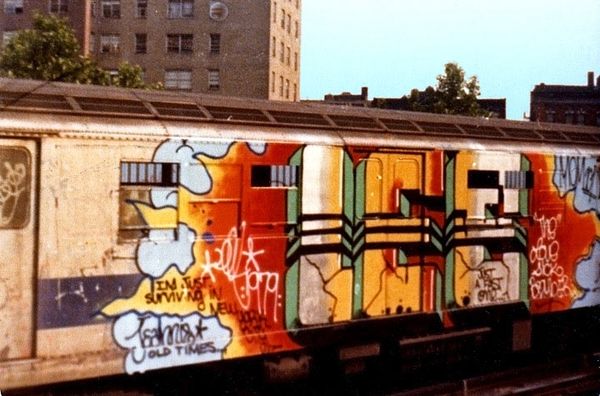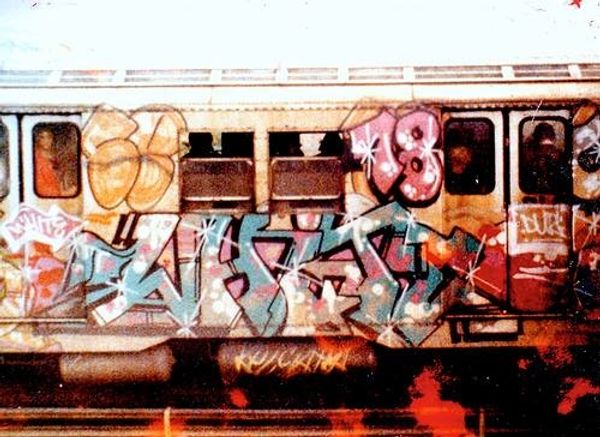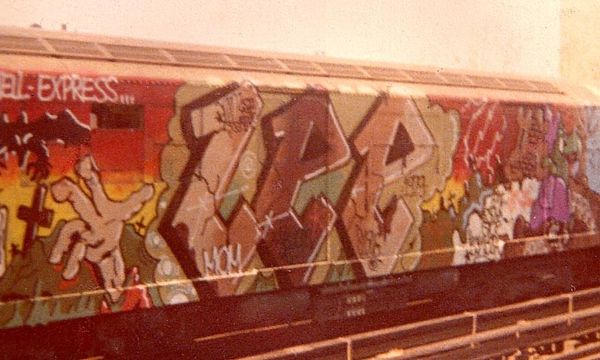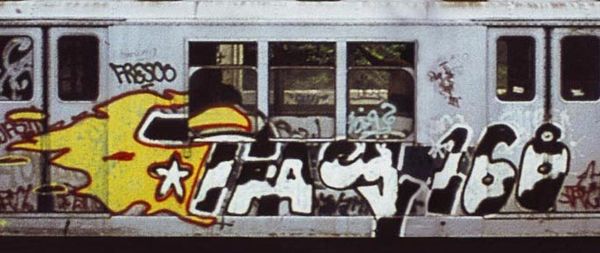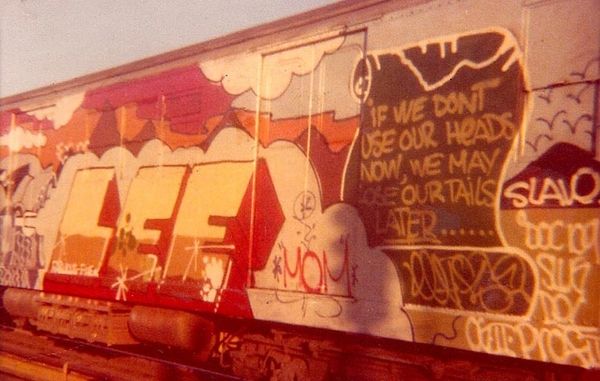
acrylic-paint, public-art
#
public art
#
graffiti
#
graffiti art
#
postmodernism
#
street art
#
street-art
#
acrylic-paint
#
public-art
#
mural art
#
graffiti-art
Copyright: Dondi,Fair Use
Editor: This is Dondi’s "Piece on an R22 Subway Train, New York" from 1979, created with acrylic paint. It’s amazing how vibrant the colors still seem, even against the grimy surface of the train. What strikes you most about this piece? Curator: For me, the key lies in understanding this work not just as an image, but as an act of material intervention. Dondi, using specific materials – likely mass-produced spray paint – transforms a functional object, a subway car, into a canvas. How does this act challenge the established boundaries of art, its consumption and display? Editor: I see what you mean. It's almost defiant, taking art out of the gallery and putting it into the daily lives of ordinary people, without their consent. It makes you wonder who gets to decide what's considered art. Curator: Exactly. Consider the social context: late 1970s New York, economic hardship, a crumbling infrastructure. Graffiti emerges as a raw expression of creativity using accessible materials in a moment of limited social mobility, adorning – or defacing, depending on your perspective – public transportation. What does it mean to make art from materials available to all? Editor: So, it’s less about the finished product, and more about the process of taking readily available materials and transforming public space. Curator: Precisely. Dondi wasn't just painting; he was engaging in a dialogue with the city, critiquing its power structures through the act of creation. Do you see any indications in his application of material, process or approach, about how graffiti writing culture, has influenced how we think about "high art?" Editor: I think I’m beginning to see that. This shifts how I view not just street art, but also where, how, and who is making art, as well as the consumption of artwork, in general. Curator: Absolutely. By focusing on the materiality and production of this piece, we start to understand the vital social and political dimensions inherent in art.
Comments
No comments
Be the first to comment and join the conversation on the ultimate creative platform.
